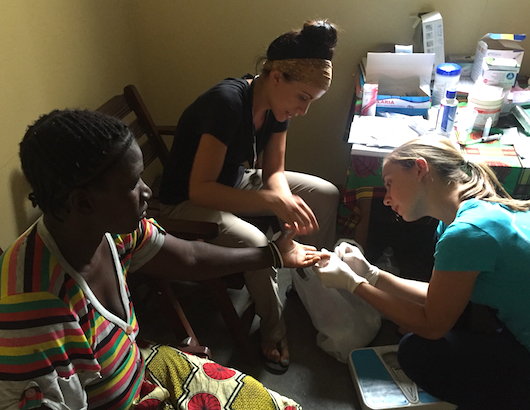Access to objective clinical information is one great obstacle to mobile medical care for underserved people. For two years in the 1990s, myself and a team of Angolans served five locations near the city of Huambo with weekly clinics. Our equipment mainly consisted of vaccinations, twenty-drugs, and a child weight scale. Objective data was mainly obtained from a blood pressure cuff, thermometer, and keen eyes and ears for clues from patient’s history and physical examination.
This week we’ve held clinic at Tchincombe Ranch. Normally a once-a-month service offered by Dr. Tim Kubacki, I took advantage of this opportunity to reenter the world of mobile medical care in Angola. Gathering patient information from vital signs, history and physical exam remains pivotal. What has improved dramatically is additional data from portable ultrasound and rapid diagnostic tests for malaria, syphilis, typhoid, hepatitis B, and HIV. The speedy advancement in rapid diagnostic tests means that reliable facts about the presence of diseases – especially infectious ones – can be available virtually anywhere in the world without needing a full laboratory.
Malaria is an illustrative example. This disease is frequent in Angola, and its most common presenting sign is fever. Understandably, the tendency is to start malaria treatment for every febrile Angolan. But, of course, many other diseases cause fever, too. The photo above captures Megan Foster and SS at Tchincombe Ranch performing a rapid malaria test by pricking a woman’s finger for a drop of blood. In all, yesterday we performed eight malaria tests. Only one was positive. This translates into both more accurate diagnosis and into seven persons not being unnecessarily treated for malaria. Indeed, today’s mobile medical care is benefiting from a wealth of sorely needed objective clinical information.

